Yellowstone National Park is a travel planning unicorn. It has multiple entrances, regions and accommodation options. The park is also enormous and there’s so much to see. We’re happy to admit that we were completely overwhelmed when we planned our first 4 days in Yellowstone itinerary back in 2019. And we travel for a living! But it turned out to be an amazing trip and we’ve since been back for another 3 days in the park. There’s a lot you need to consider when planning a trip to Yellowstone, so we’re going to walk you through it all.
In this guide we explain everything you need to know about planning your first visit to Yellowstone National Park, based on our experiences. We’ll break down the park into regions and entrances, show you the best things to do and of course walk you step-by-step through an amazing 4 days in Yellowstone itinerary so you don’t miss a thing.
Our Experience
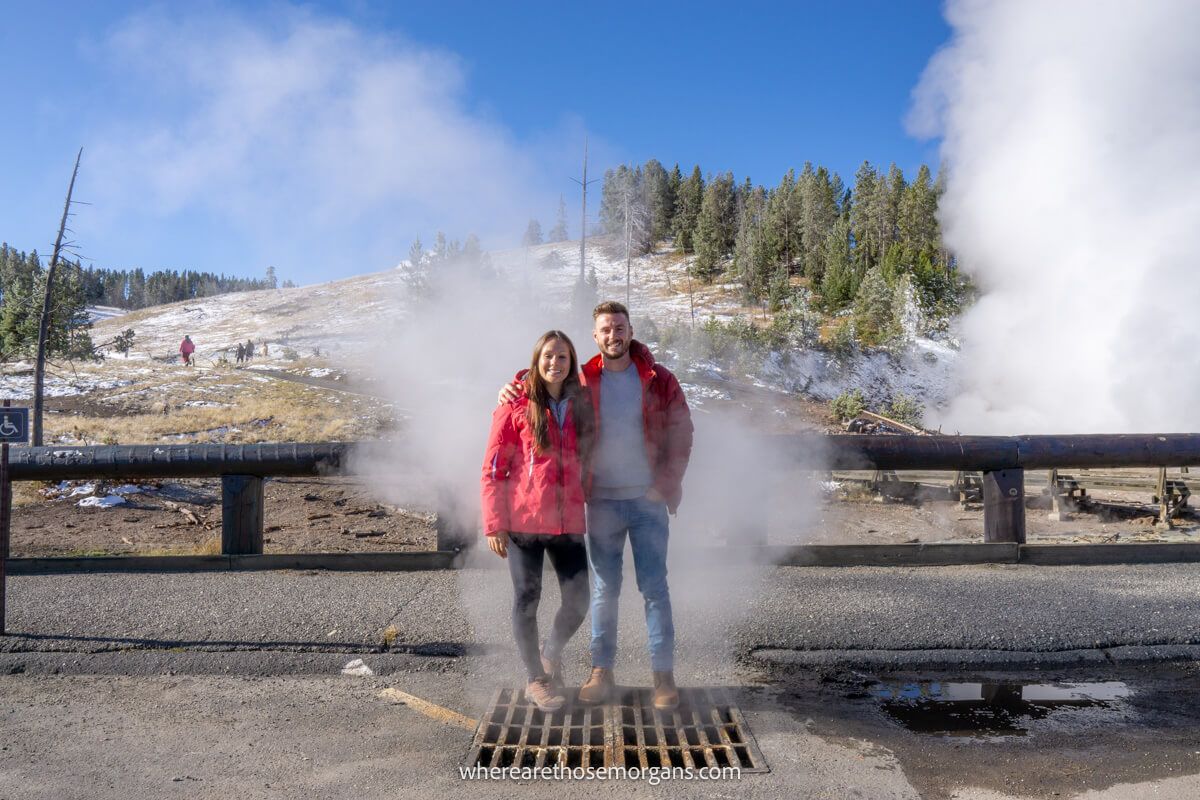
We’ve spent a total of 7 full days in the park split between visits in October 2019 and April 2021, exploring each of Yellowstone’s regions and staying at hotels both inside the park and in its surrounding towns. Our travel style is always to see and do as much as we possibly can from dawn to dusk, so you can trust us when we say that we really do know Yellowstone well.
What we love the most about Yellowstone is how unique it is. Where else can you see this many billowing geysers, vibrant hot springs and bubbling mud pots in one place? But we know it isn’t easy to plan. Since we started our travel blog in 2018, Yellowstone has definitely been the place we get the most questions, comments and emails about from our readers. And we love to help people visit for the very first time, so feel free to leave us a comment at the end. Read more about us.
Park Information
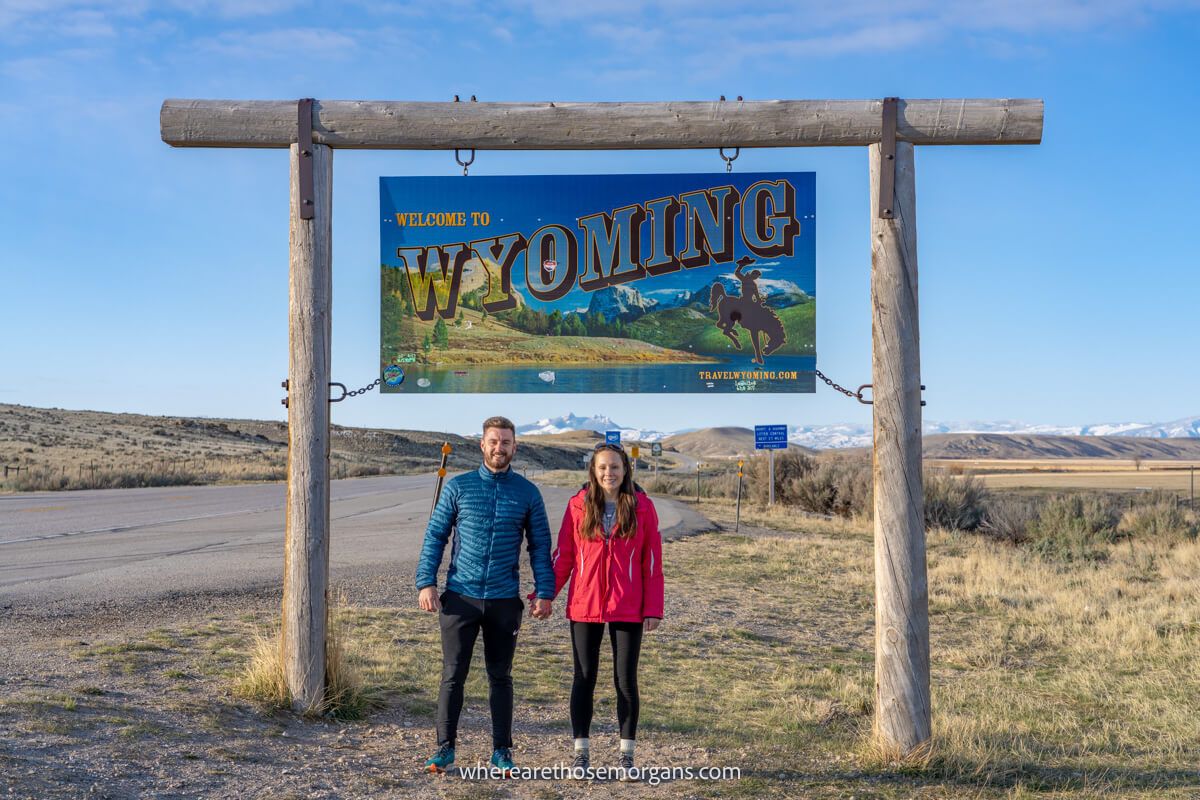
- Website: nps.gov/yell
- Hours: All day, every day
- Fees: $35/vehicle
- Backcountry camping: Allowed with permit
- Accommodation: Hotels, lodges, cabins, campgrounds
- Annual visitors: 4 million
- Peak season: July and August
- Airports: Bozeman, Salt Lake City
- Size: 2.2 million acres
- Caldera: 45 miles x 30 miles
- Last eruption: 640,000 years ago
- Geothermal features: 10,000
- Geysers: 300
Yellowstone is open year round, but the main visiting season lasts from April to October when most roads through the park are clear of snow. And it’s important to know that July and August receive more than half of the 4 million annual visitors. Entry to Yellowstone costs $35 for a 7-day pass, which covers your vehicle and all passengers. Alternatively, you can gain free entry with an America the Beautiful Pass.
Above ground, Yellowstone can be described by every synonym of the word breathtaking. But lurking just below the surface is a super-volcano known as Yellowstone Caldera. As hot magma rises from Earth’s Mantle toward the Crust, pressurized heat escapes in the form of thermal geysers, creating a spectacle worthy of millions of tourists each year. And this is what we all love about Yellowstone!
Is 4 Days Enough Time In Yellowstone?
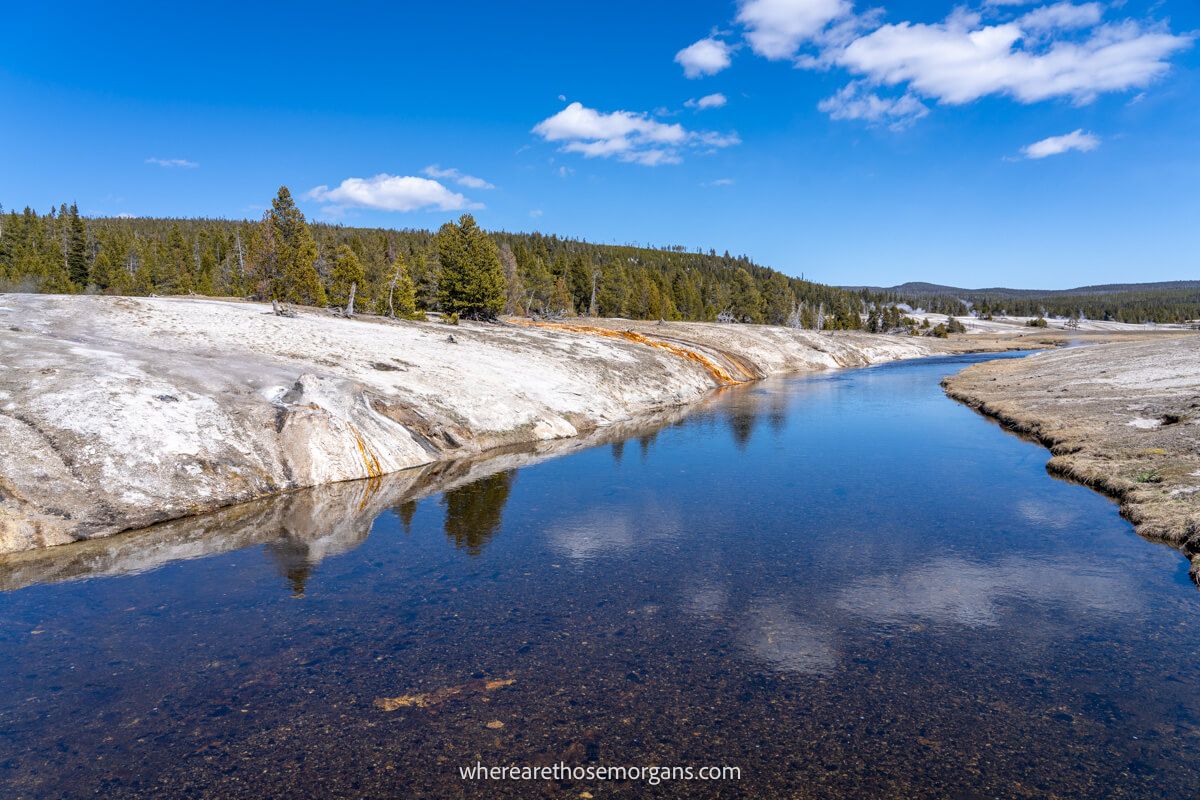
The first thing you need to decide is how many days you’ll spend in Yellowstone. It might depend on factors like how many days you have off work, your travel budget or even what time of year you’re visiting because of availability at hotels. But to answer the question, we think 4 days is the perfect amount of time for a first visit to Yellowstone National Park, and that’s based on our own 3 and 4 day trips to the park.
Here’s the way we see it:
2 Days – You can see a lot of the park in 2 days if you don’t hike and you go quickly through the major geyser basins. But it’ll be a rush and you’ll have to compromise on certain regions or attractions. This might work better if you’re on a wider road trip and don’t have many days available overall.
3 Days – If you can’t get 4 days off work, hotels aren’t available or it’s getting too expensive, you can absolutely see Yellowstone’s highlights in 3 days. But you’ll have to be quick, spend long days in the park and lose flexibility on your itinerary compared to having the extra day.
4 Days – With 4 full days you can slow down, see and do everything, keep costs to a reasonable level and have flexibility in case of bad weather. This longer time frame also means you can can take on some of the hikes. You might even end up with a bit of spare time, which you’ll be grateful for.
5 Days – Personally, we think 5 days is too long in the park unless you’re going specifically for hiking or photography. You’ll have seen everything at a gentle pace in 4 days, plus it starts to get very expensive by staying longer. If you have the extra time, we highly recommend you use it in Grand Teton instead.
READ: How to spend 2 days in Grand Teton
Regions Of The Park
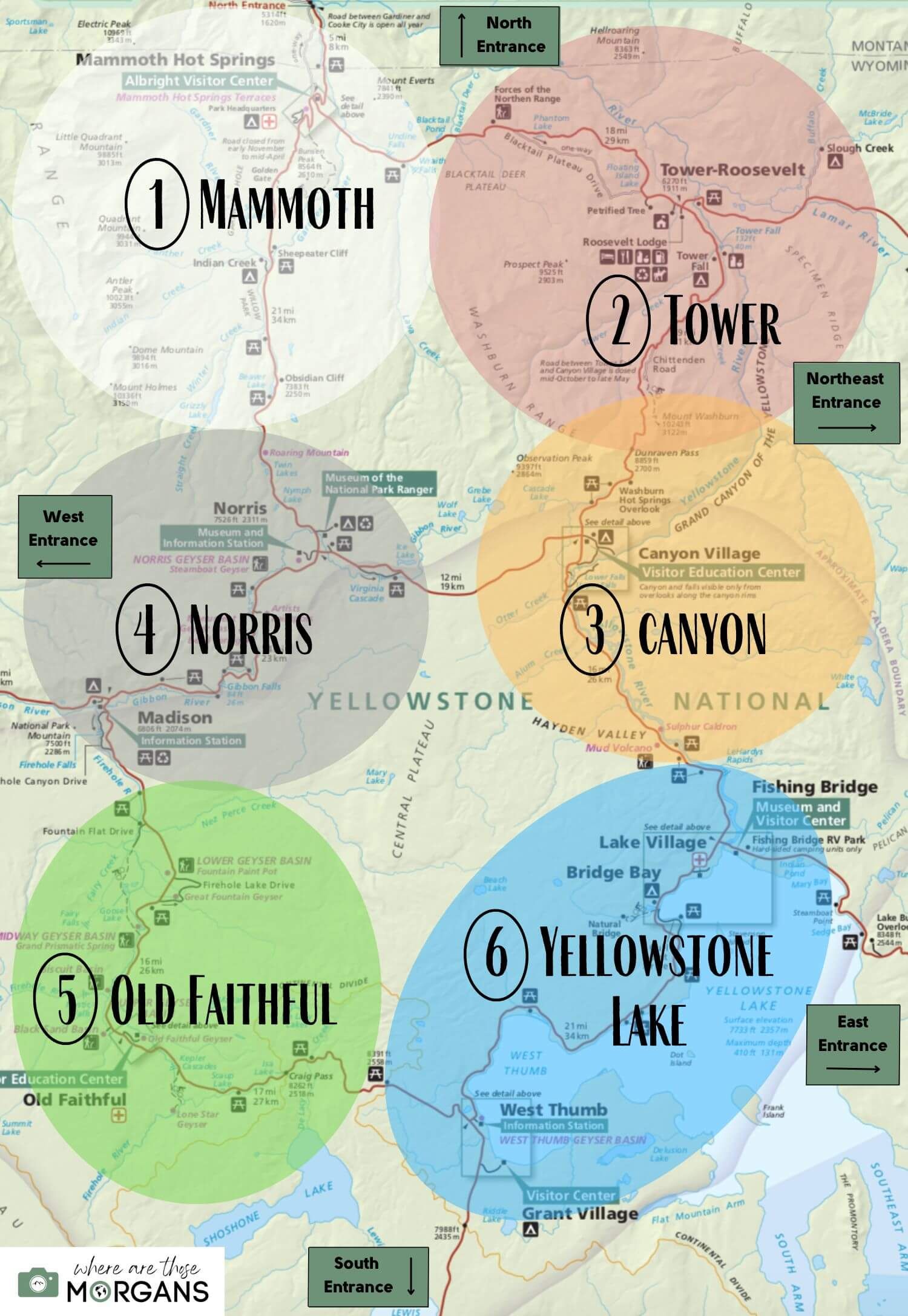
The reason Yellowstone is so hard to plan is because it’s a massive park with multiple regions and entrances. So before we get into any itinerary examples, we think it’s very helpful to understand the layout of Yellowstone. That way the itineraries will make more sense when you read them.
Now, there are no official regions of Yellowstone but we think it’s easiest to break the park down into 6 different areas (as you can see in our map above):
- Mammoth Hot Springs
- Tower-Roosevelt
- Canyon Village
- Norris Geyser Basin
- Old Faithful
- Yellowstone Lake
Yellowstone’s top attractions are spread right across the entire park. The reason we recommend 4 days and not 3 days for a first visit is so you can get around each of these 6 unofficial regions at a comfortable pace.
There’s a lot to see and it might sound overwhelming, but each region does not require a full day to explore. We’ll show you exactly how to combine these regions later in our itinerary examples. Trust us, it’s easier than it seems at this point!
Need help planning your trip to Yellowstone?
Our popular Yellowstone travel guidebook helps you with planning every aspect of your visit, including what to see in each region, where to eat and stay, itinerary ideas and map!
View Yellowstone Guidebook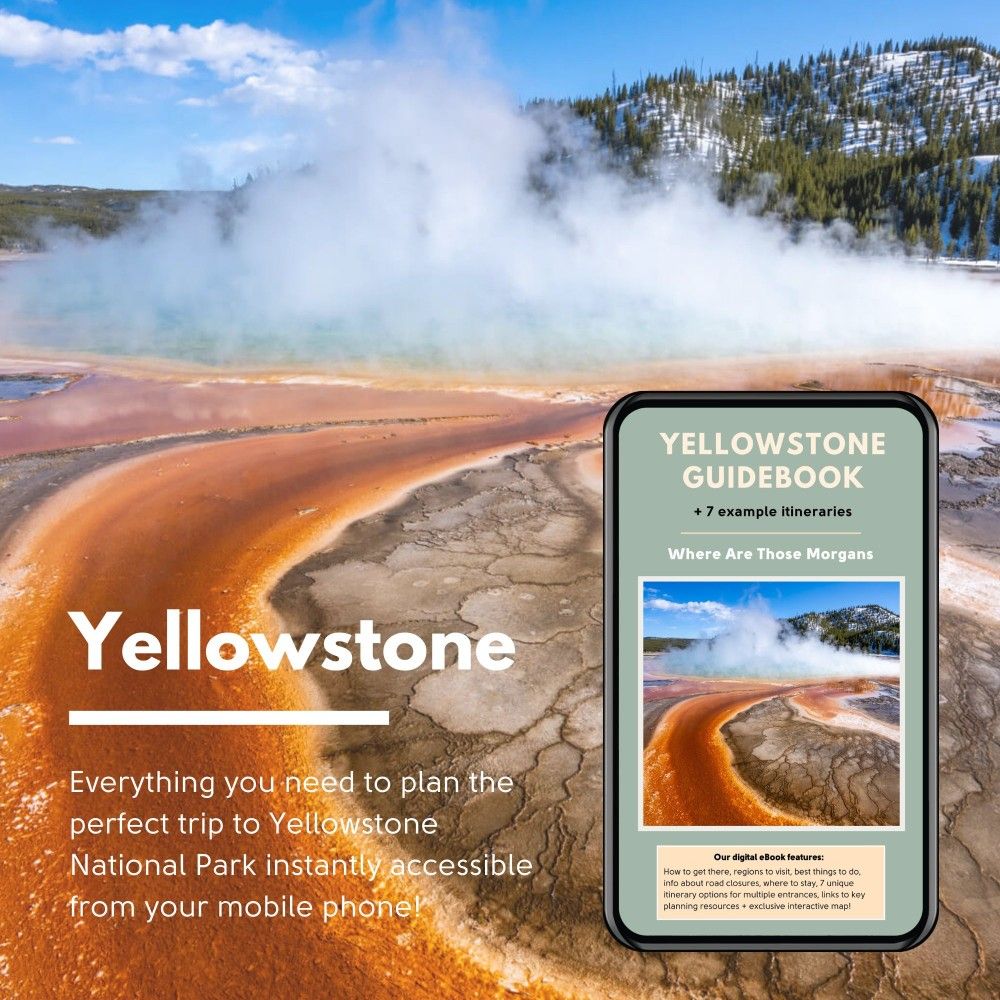
Entrances
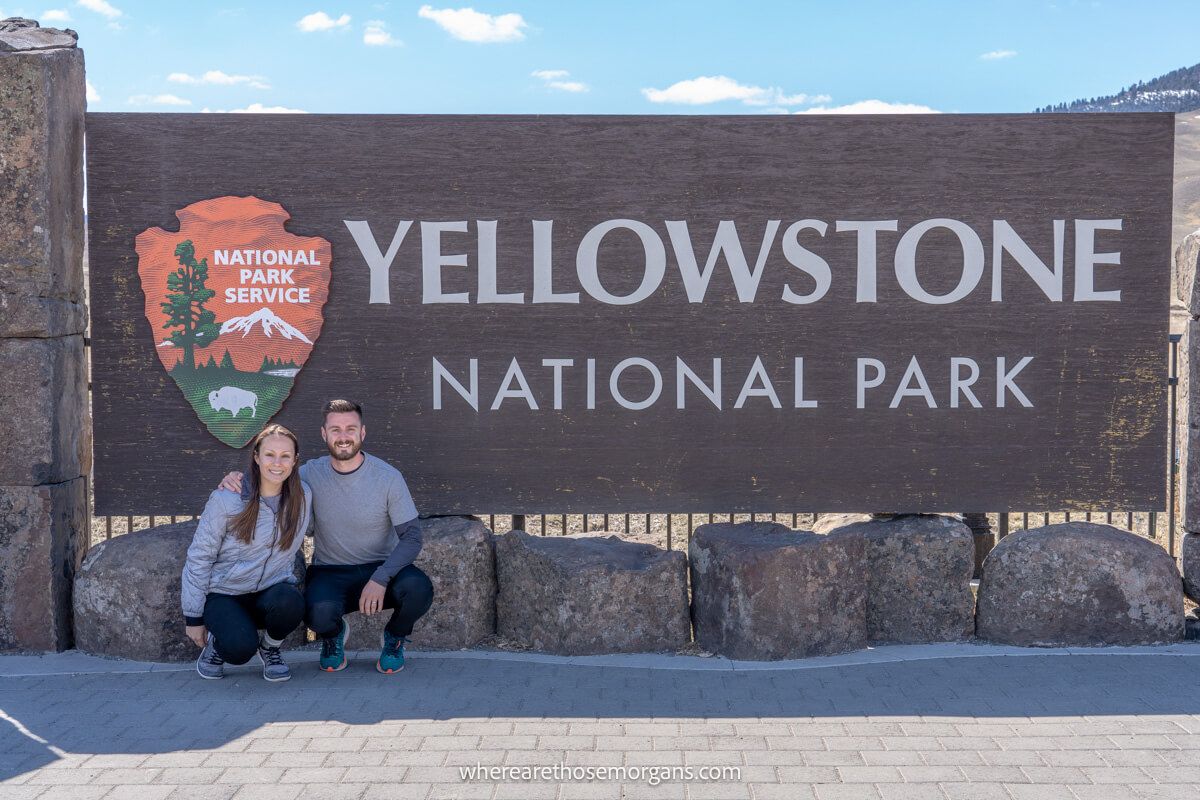
Yellowstone National Park has 5 entrances:
- North Entrance – Mammoth, Gardiner, Bozeman, Glacier
- Northeast Entrance – Tower, Cooke City, Billings
- East Entrance – Yellowstone Lake, Cody, Black Hills
- South Entrance – West Thumb, Grand Teton, Jackson
- West Entrance – West Yellowstone, Idaho
Having so many options for entering and leaving Yellowstone created the most uncertainty when it came to planning our first itinerary. We were concerned that we’d miss out on something if we started in one place or ended in another. But it wasn’t the case. You’ll have the chance to visit each region of the park in 4 days, no matter your route in and out, so don’t worry too much about entrances.
Here are the main things to consider with entrances:
Road Closures – Roads into and through the park open and close at different times of the year, so always keep an eye on this live road map for Yellowstone. This is particularly important if you plan to visit in April, May or October.
Efficiency – Begin and end your itinerary at the entrances that make the most sense for your travel plans. We’ve entered via North Entrance and Northeast Entrance because both times we came across to Yellowstone from South Dakota, and the road into East Entrance from Cody was closed. We exited through South Entrance for Grand Teton the first time and West Entrance for Idaho the second time.
READ: The 10 closest airports to Yellowstone
Things You Can’t Miss In Yellowstone
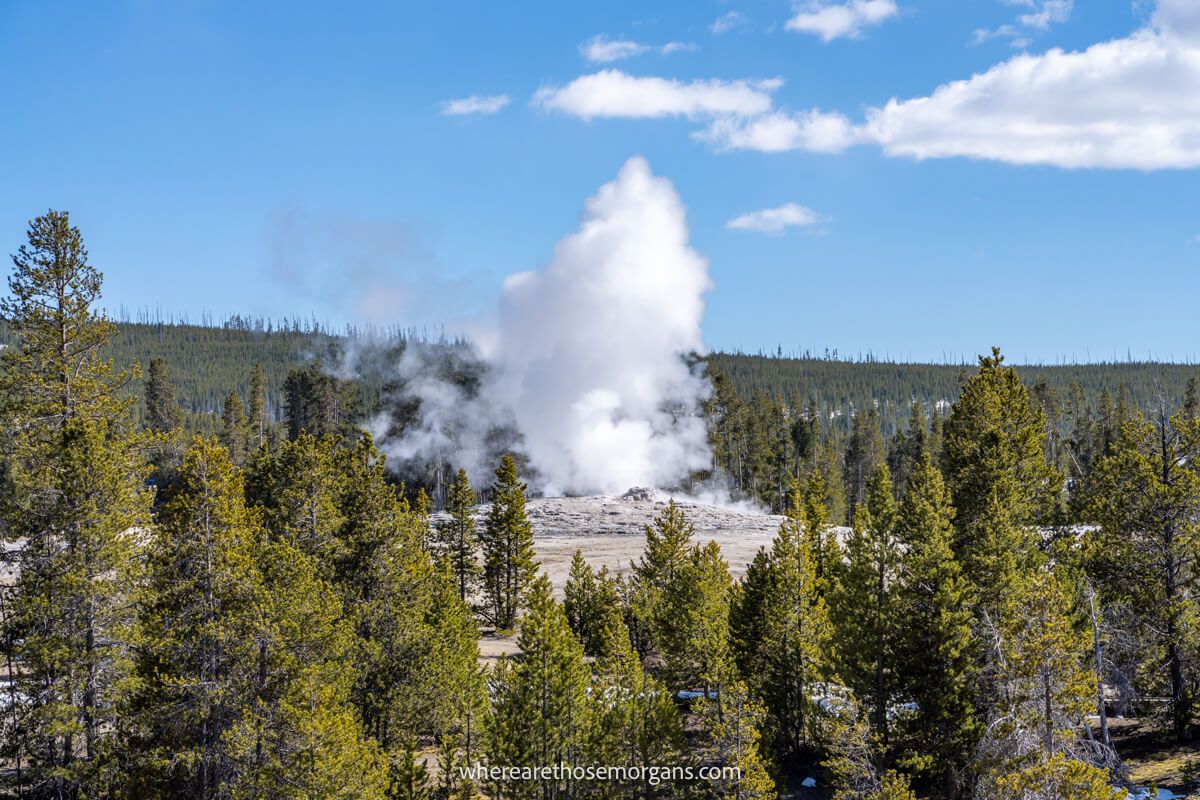
The last thing we’ll talk about before getting into the itinerary examples is what you can’t miss when you visit Yellowstone for the first time. We always look at things to do in a new place before we create our itinerary, and it’s even more important in a place like Yellowstone because it has so many attractions.
Here are the most famous things to see and do:
- Mammoth Hot Springs
- Lamar Valley
- Grand Canyon of the Yellowstone
- Hayden Valley
- Norris Geyser Basin
- Yellowstone Lake
- West Thumb Geyser Basin
- Lower Geyser Basin
- Midway Geyser Basin (Grand Prismatic Spring)
- Upper Geyser Basin (Old Faithful)
In our opinion, they are the 10 must visit attractions for a first visit to Yellowstone, so make sure you prioritize them. But there are lots more amazing places you can visit if you have time, which again is why we recommend spending 4 days in Yellowstone.
Here’s what else you should add into your itinerary:
- Tower Fall
- Mud Volcano
- Mount Washburn (hike)
- Black Sand Basin
- Biscuit Basin
- Fairy Falls Trail (hike)
- Mystic Falls Trail (hike)
- Artists Paintpot Trail
READ: Unmissable things to do in Yellowstone
4 Days In Yellowstone Itinerary
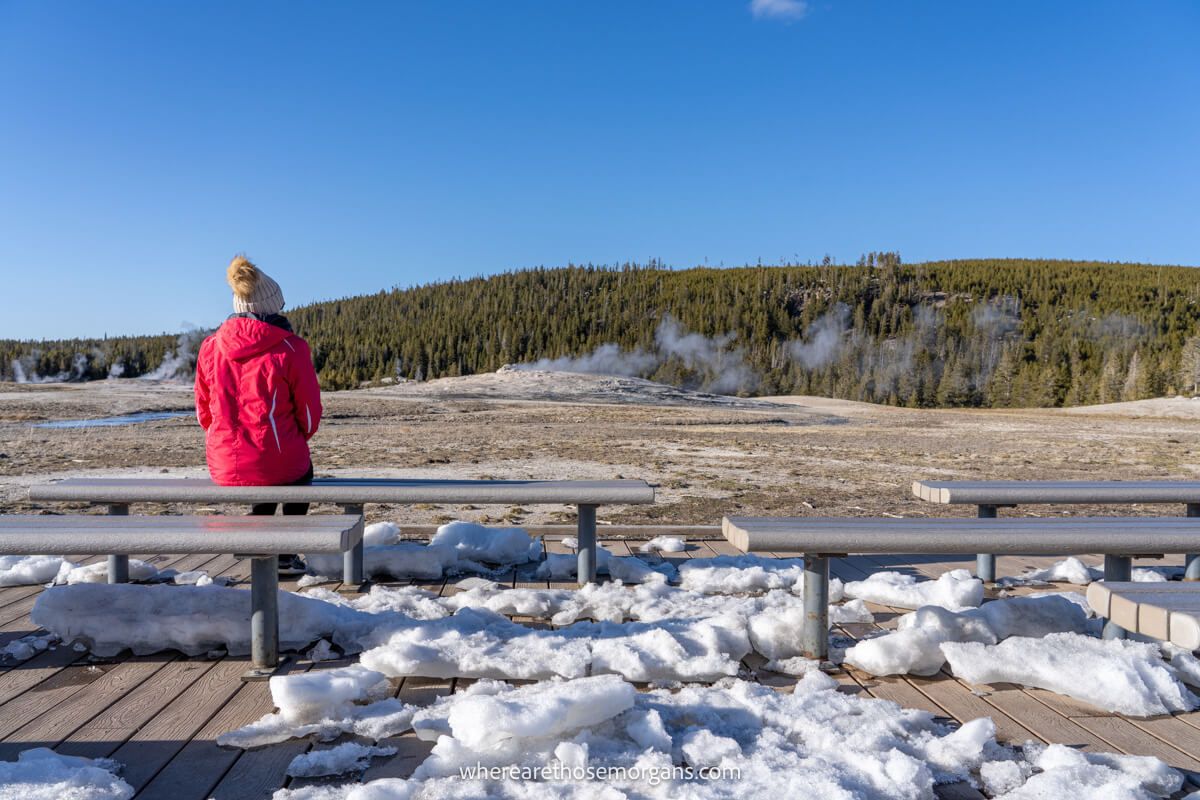
There are 25 variations of entrances that can be used to enter and exit Yellowstone. For instance arriving into West and leaving from North, or arriving into South and leaving from East. And with 4 million annual visitors, you can bet each variation will be used. This makes our lives difficult because we can’t show you 25 itineraries in this guide, it would be huge!
So instead what we’ll do is walk you through one main 4 days in Yellowstone itinerary using West Entrance to begin and South Entrance to end, exactly as we would do it. We chose this route for our primary itinerary because West Entrance is the most used entrance to the park and South Entrance leads to Grand Teton, which we encourage you to explore after Yellowstone.
Later in the guide we’ll show you summarized itineraries for how to spend 4 days in Yellowstone starting at each of the other entrances, as well as important information about your accommodation options as you travel around the park.
Let’s begin!
Day 1: Norris And Mammoth
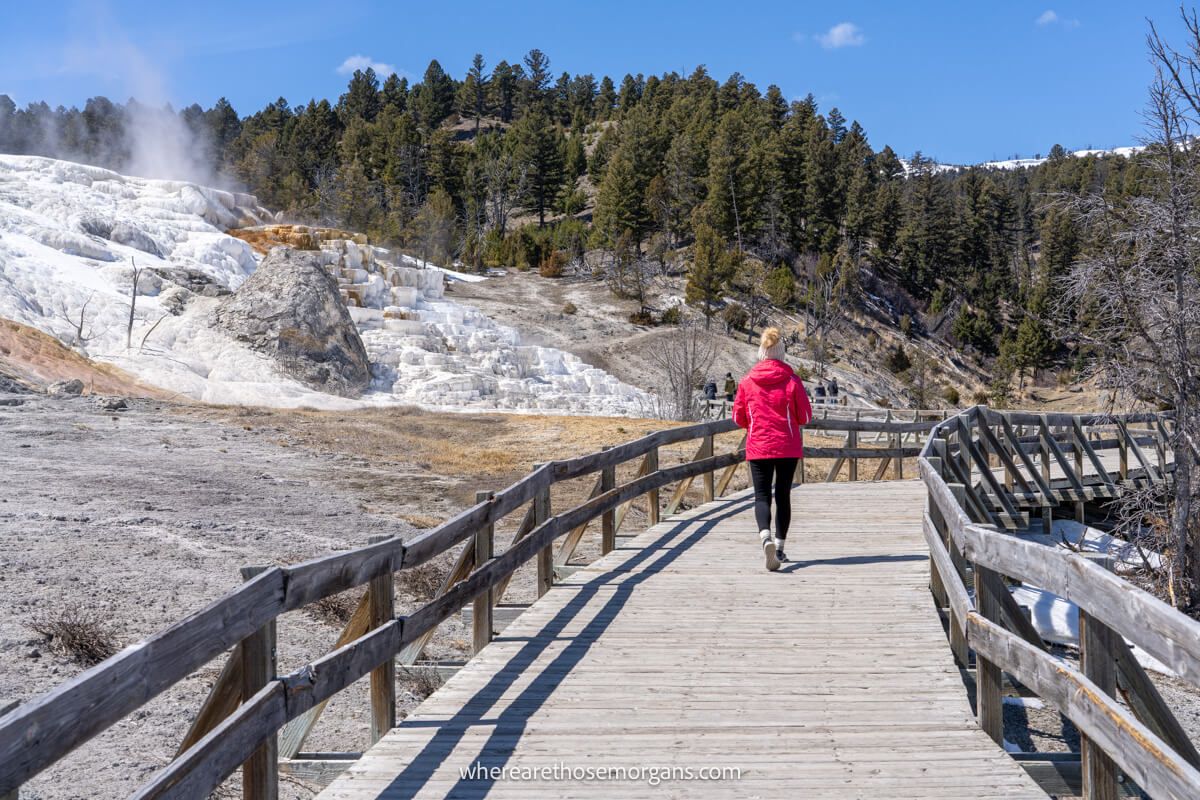
Start early with a big breakfast in West Yellowstone, head into the park through West Entrance and join Grand Loop Road. The first point of interest is a quick stop to see Gibbon Falls from above. Next is a 2.4-mile roundtrip hike to Monument Geyser Basin, it’s a fairly steep trail with great summit views. You don’t have to do this one but it’s a nice introduction to the park.
Stop just 1 mile further up the road and hike Artists Paintpots Trail to see bubbling mud pots and lots of small orange springs. It’s one of our favorite lesser known spots in the park, so don’t miss it. Continuing north, the next stop is Norris Geyser Basin which takes quite a while to get around. Norris is split into 2 sections called Back Basin and Porcelain Basin. It doesn’t matter which section you visit first, but don’t miss Steamboat Geyser (tallest geyser in the world) and Echinus Geyser (largest acid-water geyser).
Keep driving north until you reach Mammoth Hot Springs, there’s really not much to see in-between. Spend a few hours exploring both the Upper and Lower Terraces at Mammoth, it’s very unique and picturesque. If you have time and energy, you could consider hiking Lava Creek Trail to see Undine Falls, but this is totally optional. Spend the night either in Mammoth Hot Springs, Gardiner or Tower Junction.
Day 2: Tower And Canyon
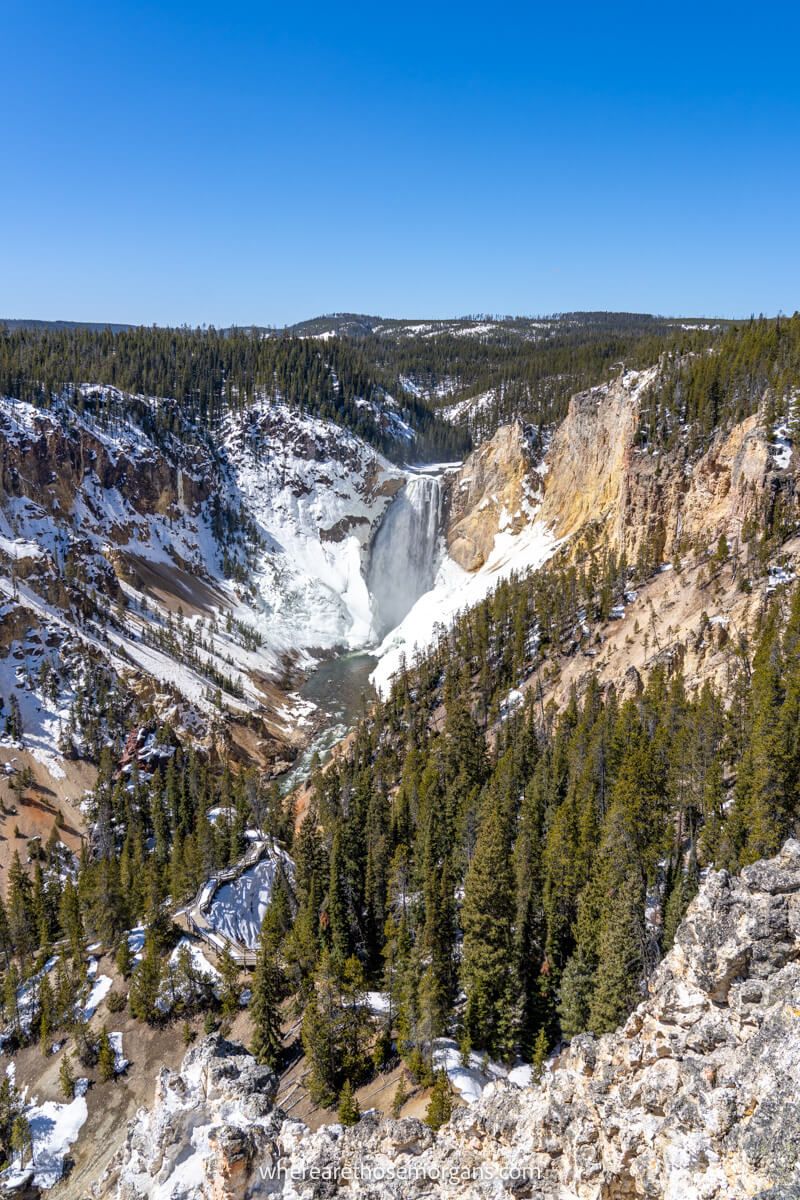
Get a very early start and drive out into Lamar Valley. We highly recommend you arrive before sunrise because it’s considered the best place to see wildlife in Yellowstone and animals are most active around dawn. Drive through the valley, pull over and get out of the car, or consider hiking part of Specimen Ridge Trail if you want the highest chance of seeing wildlife.
The next place to stop is near Tower General Store, so you can hike to see Tower Fall and Yellowstone River Overlook. Continue driving south and decide if you want to hike up to Mt Washburn, the most famous trail in Yellowstone. Beginning at Dunraven Pass, it’s a 6-mile roundtrip hike with 1,400 feet elevation, so it’s no joke but it leads to spectacular views. Hike it if you can.
It’ll be getting late in the afternoon by the time you finish hiking Mt Washburn. You’ll finish the second day by driving along the North Rim of the Grand Canyon of the Yellowstone. Stop at as many overlooks as you can to see both ways down the canyon. Inspiration Point is the best viewpoint on this side, but we also encourage you to climb down to Brink of the Lower Falls if it’s open. Stay in Canyon or West Yellowstone.
Day 3: Lake And West Thumb
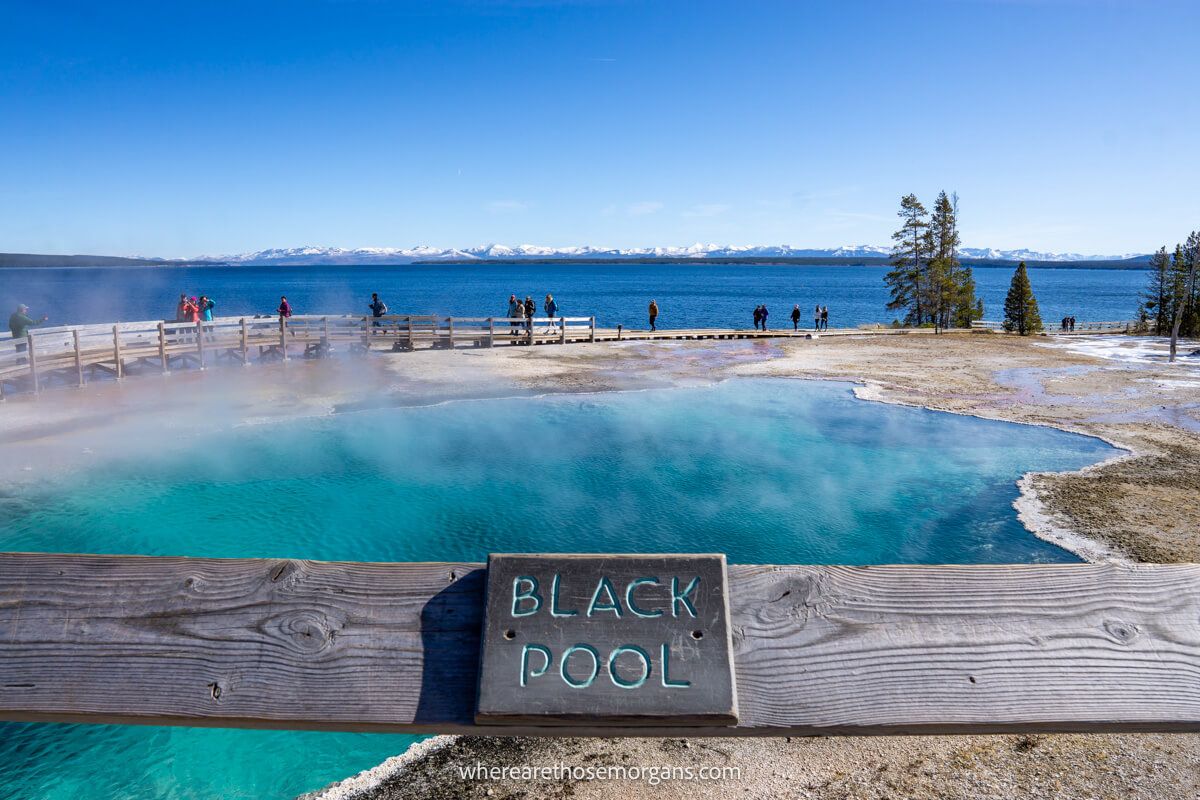
Start out the third day with a drive along South Rim of the Grand Canyon of the Yellowstone. We highly recommend arriving at Artist Point in time for sunrise because it’s a stunning scene. We’ve done it twice and it’s lovely. Stop at Upper Falls View on the way back and look out for eagles, we saw a huge eagle fly out of a nearby tree last time we were there. It was awesome!
If you’re less interested in photography and more interested in wildlife, skip the waterfall and instead drive down into Hayden Valley for sunrise. After Lamar Valley, it’s considered the second best place to see wildlife in Yellowstone. We tracked a coyote for a few minutes as it stalked alongside the river. Next up is Mud Volcano, a series of steamy and smelly vents.
After the valley you’ll arrive at Yellowstone Lake. You could hike Storm Point for a close up of the lake, otherwise continue down to West Thumb Geyser Basin. We really like West Thumb and think it’s one of the more underrated basins. Take a good walk around and enjoy the unique geothermal features, with stunning views over distant mountains. Consider hiking Yellowstone Lake Overlook Trail. Drive to Old Faithful and stay there, or stay in West Yellowstone.
Day 4: Lower, Midway And Upper Basins
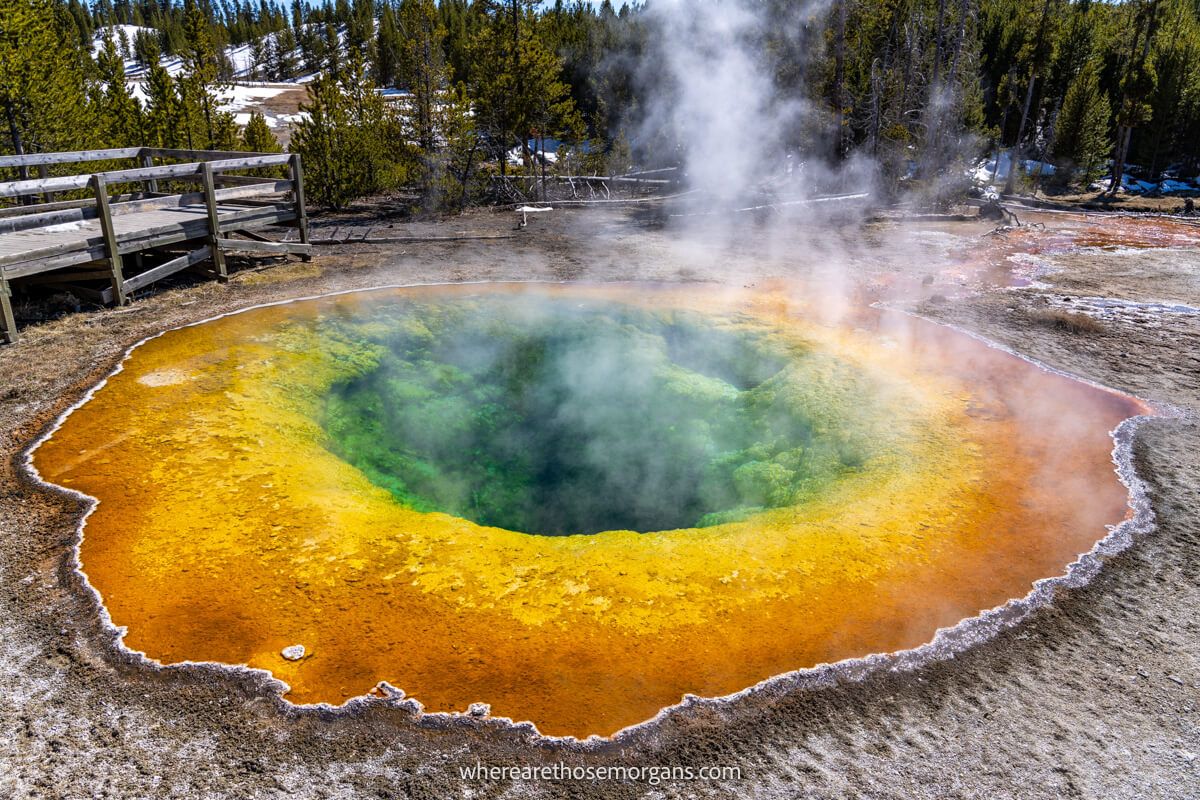
The last day is all about enjoying Yellowstone’s most famous attractions. We recommend spending a full day exploring Lower, Midway and Upper geyser basins because there’s so much to see beyond Old Faithful and Grand Prismatic Spring. Start out with Firehole Canyon Drive and swim in the river if it’s open. Next up is Fountain Paint Pot Trail in the Lower basin, it’s a short boardwalk route with lots of geysers.
Next, turn onto the one way Firehole Lake Drive and stop to see the many geothermal features. After exiting back onto the loop road, drive south to Midway basin so you can walk around Grand Prismatic Spring and Excelsior Geyser. For us, Grand Prismatic Spring is the standout feature in Yellowstone, so we highly recommend you hike at least the first part of Fairy Falls Trail to see it from above.
Make short stops at Biscuit Basin and Black Sand Basin before finally arriving at Old Faithful. Start with the bleachers (benches in a semi-circle) to see an eruption, then head back into Upper basin to see lots more intriguing features. We highly recommend you continue as far as Morning Glory Pool, it’s one of our favorites. On the way back hike up to see Old Faithful erupt from the elevated viewing area. Either stay at Old Faithful or exit via South Entrance and drive down to Grand Teton.
Itinerary Variations
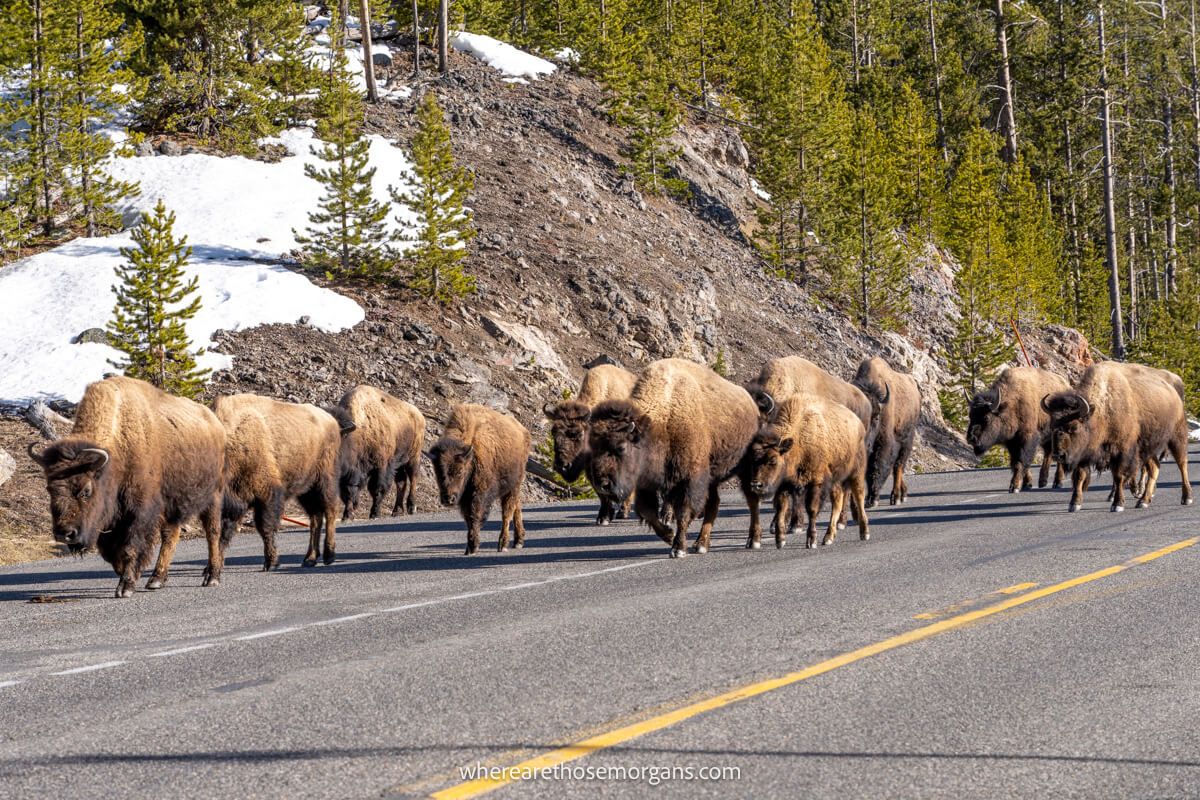
What if you don’t plan to enter through West Entrance and leave through South Entrance? You might be using Salt Lake City or Bozeman airport both in and out, but you also might be driving to Yellowstone from South Dakota or Colorado.
Let’s take a summarized look at how we would plan a 4 days in Yellowstone itinerary starting from each of the other park entrances. You might have to adjust the last day to suit where you plan to exit the park at the end of your itinerary.
North Entrance
Day 1:
- Start with Mammoth Hot Springs
- Head down to Norris Geyser Basin
- Explore both Norris basins
- Hike to Artists Paintpots
- Hike up to Monument Geyser Basin
- Spend the night in West Yellowstone
Day 2:
- Start with Firehole Canyon Drive
- Walk around Fountain Paint Pot Trail
- See Grand Prismatic Spring
- Hike Fairy Falls Trail
- Visit Biscuit Basin and Black Sand Basin
- See Old Faithful Erupt
- Hike back into Upper Geyser Basin
- Stay at Old Faithful
Day 3:
- Start at West Thumb Geyser Basin
- Hike Yellowstone Lake Overlook Trail
- Explore the Yellowstone Lake are
- Consider hiking Storm Point Trail
- Head up to Mud Volcano
- Look for wildlife in Hayden Valley
- Take South Rim Drive to Artists Point
- Sunset at Grand Canyon of the Yellowstone
- Stay at Canyon
Day 4:
- Start with a hike up Mt Washburn
- Hike Tower Fall and River Overlook
- Head out into Lamar Valley for wildlife
- Hike a portion of Specimen Ridge
- Maybe hike Lava Creek to Undine Falls
- Explore Mammoth Hot Springs
- Stay in Mammoth or Gardiner
Northeast Entrance
Day 1:
- Sunrise in Lamar Valley for wildlife
- See Tower Fall and River Overlook
- Hike Mt Washburn
- Sunset at Grand Canyon of the Yellowstone
- Stay in Canyon
Day 2:
- Sunrise in Hayden Valley for wildlife
- See the Mud Volcano
- Explore the Lake area
- Hike Storm Point Trail
- Explore West Thumb Geyser Basin
- Hike to the lake overlook
- Drive to Old Faithful
- Watch evening eruptions
- Stay at Old Faithful
Day 3:
- Start by hiking out into Upper basin
- Go as far as Morning Glory Pool
- See Old Faithful erupt from above
- Visit Black Sand and Biscuit Basins
- Hike Fairy Falls Trail
- Walk around Grand Prismatic Spring
- Loop around Firehole Lake Drive
- Walk Fountain Paint Pot Trail
- Take Firehole Canyon Drive
- Swim in the river if it’s open
- Stay in West Yellowstone
Day 4:
- Start with Gibbon Falls
- Hike to Monument Geyser Basin
- Walk to Artists Paintpots
- Explore both sides of Norris Basin
- Walk around Mammoth Hot Springs
- Stay in Mammoth or Gardiner
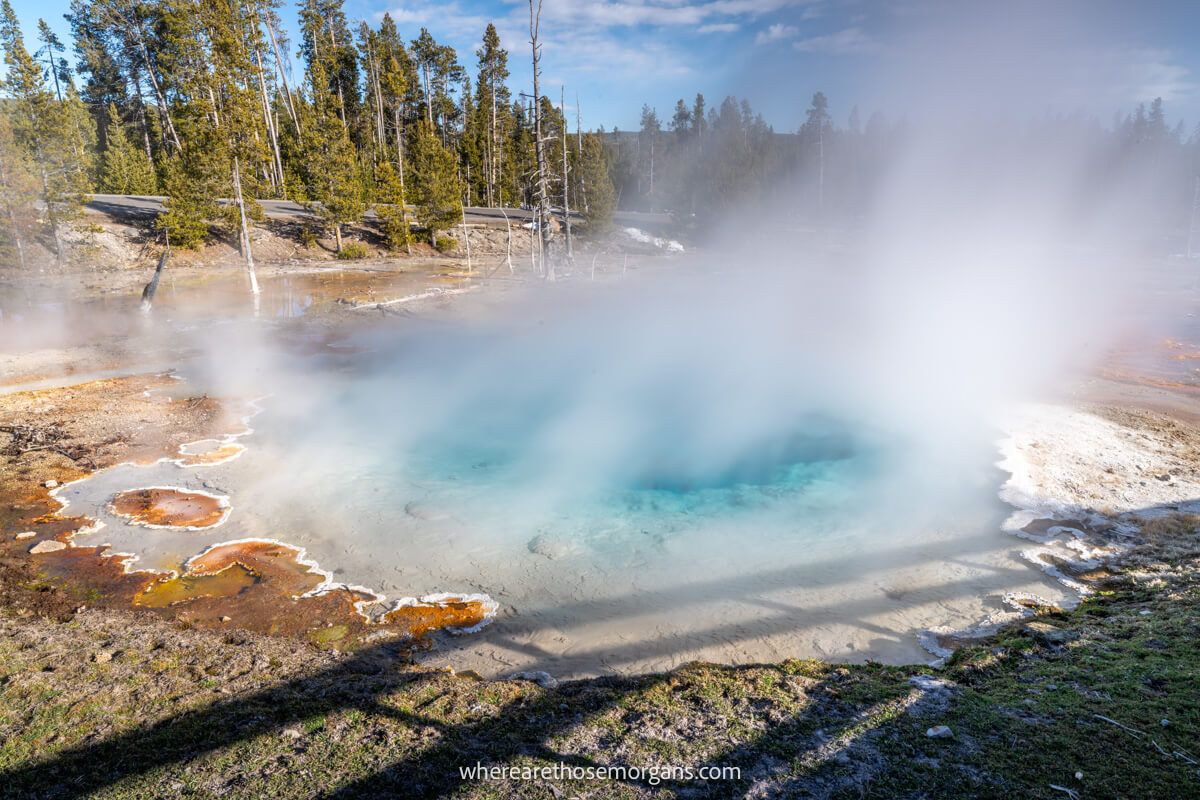
East Entrance
Day 1:
- Start with the Lake area
- Strong hikers can do Avalanche Peak
- Otherwise hike Storm Point
- Head north to Mud Volcano
- Spot wildlife in Hayden Valley
- See Grand Canyon of the Yellowstone
- Stay in Canyon
Day 2:
- Start with hiking Mt Washburn
- See Tower Fall and River Overlook
- Spot wildlife in Lamar Valley
- Explore Mammoth Hot Springs
- Stay in Mammoth or Gardiner
Day 3:
- Start with Norris Geyser Basin
- Walk to Artists Paintpots
- Hike to Monument Geyser Basin
- Stop to see Gibbon Falls
- Drive Firehole Canyon
- Swim in the river if open
- Stay in West Yellowstone
Day 4:
- Start with Fountain Paint Pot Trail
- Drive Firehole Lake to see geysers
- Walk around Grand Prismatic Spring
- Hike Fairy Falls
- Stop at Biscuit and Black Sand Basins
- Explore Old Faithful and Upper Basin
- Stop at West Thumb Basin
- Drive down to Grand Teton
- Stay in Moran or Jackson
South Entrance
Day 1:
- Start with West Thumb Basin
- Explore Old Faithful and Upper Basin
- See Black Sand and Biscuit Basins
- Hike Fairy Falls
- Walk around Grand Prismatic Spring
- Loop around Firehole Lake Drive
- Walk Fountain Paint Pot Trail
- Swim in the Firehole River if open
- Stay in West Yellowstone
Day 2:
- Start with Gibbon Falls
- Hike to Monument Geyser Basin
- Walk to Artists Paintpots
- Explore Norris Geyser Basin
- See the terraces at Mammoth
- Stay in Mammoth or Gardiner
Day 3:
- Sunrise in Lamar Valley for wildlife
- See Tower Fall and River Overlook
- Hike Mt Washburn
- See Grand Canyon of the Yellowstone
- Stay in Canyon
Day 4:
- Sunrise in Grand Canyon of the Yellowstone
- Spot wildlife in Hayden Valley
- See the Mud Volcano
- Explore the Lake area
- Hike Storm Point
- Walk around West Thumb Geyser Basin
- Drive down to Grand Teton
- Stay in Moran or Jackson
Accommodation
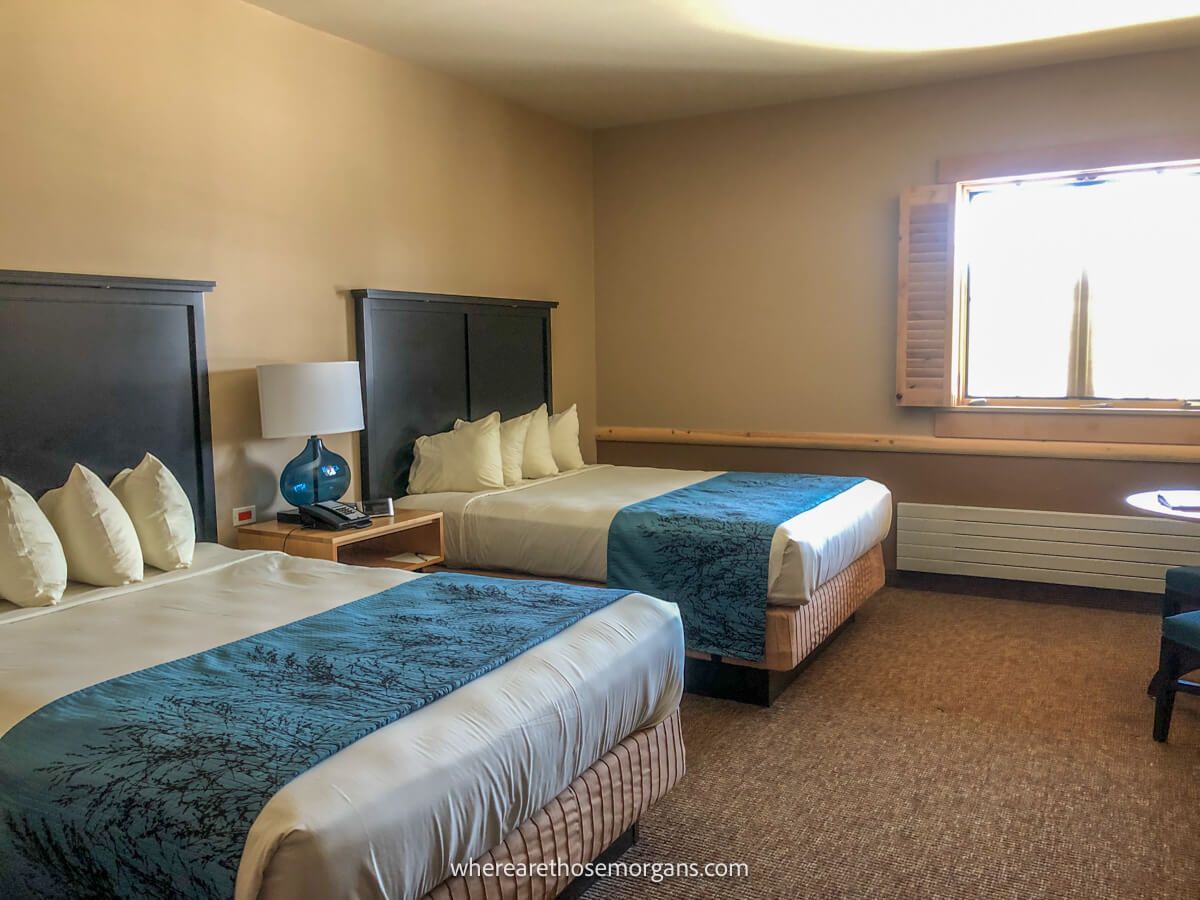
We’ve always said booking hotels is the hardest part about planning a trip to Yellowstone. During our first trip we stayed in Cody, Mammoth, Canyon, West Yellowstone and Jackson. Then during our second trip we stayed in Cody, Gardiner and West Yellowstone. We recommend booking way in advance to secure rooms, otherwise you might miss out on your preferences. Rooms book up quickest in June, July and August.
We prefer to move hotels each night in order to keep our Yellowstone itinerary as efficient as possible, and reduce our time spent driving. But you could book one hotel for your entire stay in a place like West Yellowstone, which has a nice central location to the park’s top attractions.
After staying at lodging inside the park and hotels nearby, we wouldn’t say there’s a better or worse way to do it. Hotels in the park are more convenient, but they’re often fully booked, they can be expensive and food options are limited. Whereas staying at hotels in nearby towns gives you better hotel and restaurant options, but it’s also less convenient for attractions. We highly recommend reading our guide below on the various places you can stay around the park.
READ: Where to stay around Yellowstone
Best Time To Visit Yellowstone
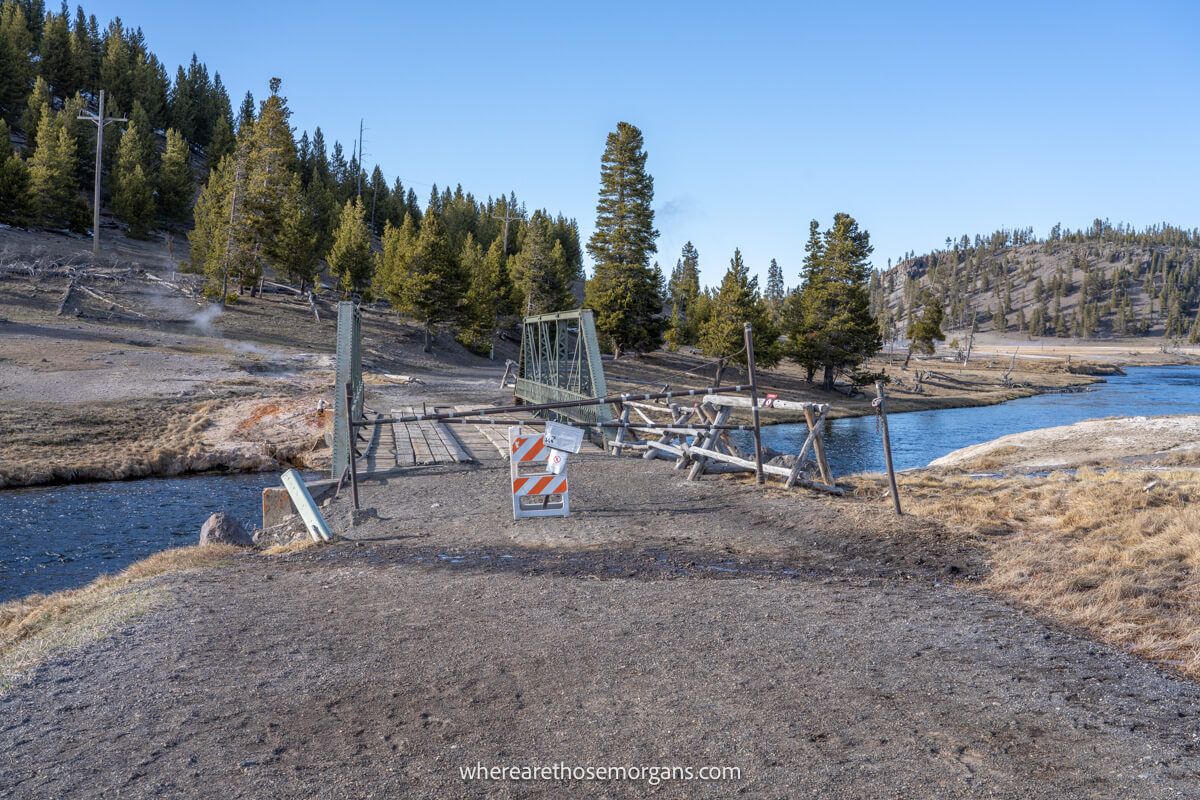
We think June and September are the two best months of the year to visit Yellowstone National Park because they have the best balance between costs, crowds, attractions, road conditions, hotel availability and temperatures. So if you have flexibility over your dates, we recommend booking your trip for June or September. The next time we visit Yellowstone it’ll be in one of those two months.
Personally we would avoid July and August at all costs because more than 2 million people visit in just those 2 months. That means full hotels, crammed roads and busy attractions. Combine all that with hot weather and high prices due to demand. No thanks! But we know it’s the school holidays and you might not have a choice. If that’s the case, book hotels in advance and prepare for a theme park feel.
It’s important to remember that Yellowstone’s roads have staggered opening and closing times each year. You don’t have to factor this into your thinking if you visit in June, July, August or September. But if you want to visit when it’s quieter in April, May or October, you must be aware that roads can and will close if snow falls. Trust us, it happened to us when we visited Yellowstone in October!
Our trips in April and October were fantastic in the sense that hotel rooms were cheaper and more readily available, wildlife was active and it was quiet in the park. However, the flip side of the coin was not only roads closing due to snow, but also some hiking trails being closed due to snow or even bear activity because they’re the months either side of hibernation. It’s all about the trade off, so what’s more important to you?
READ: Visiting Yellowstone in April
Safety
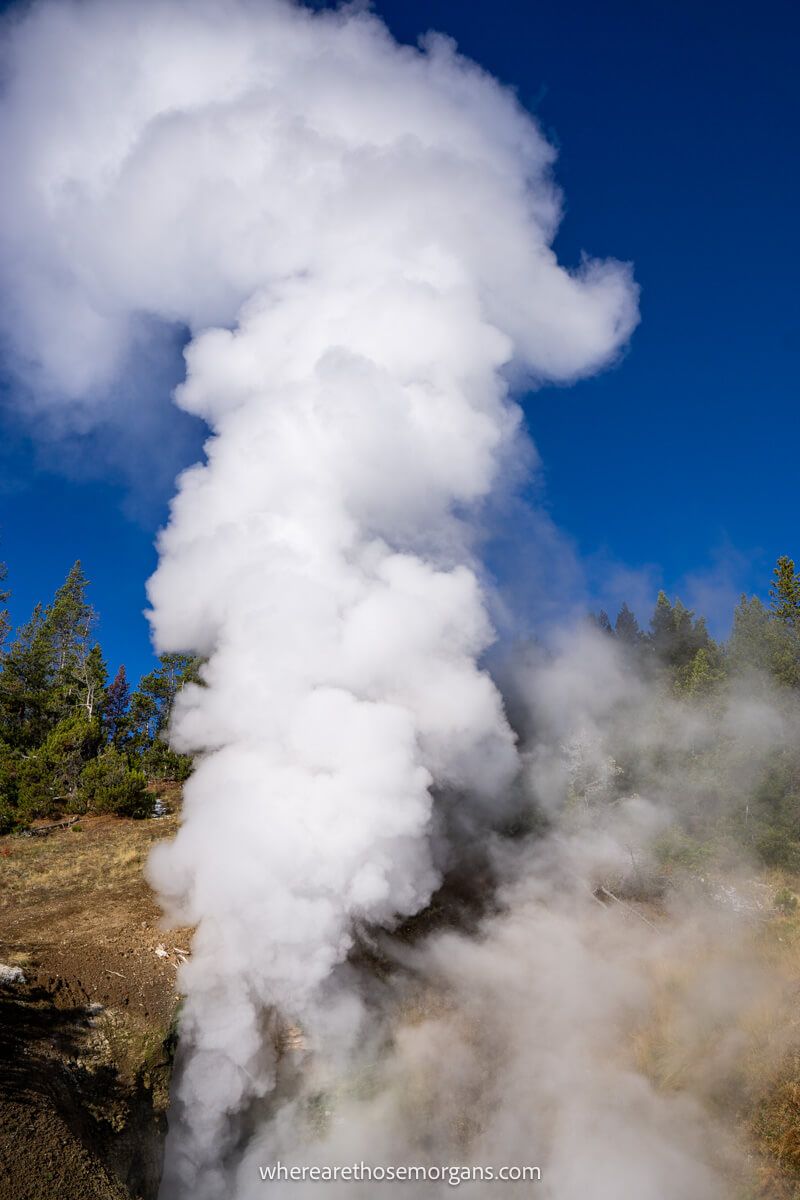
It doesn’t matter how many days you spend in Yellowstone, please remember to be sensible and responsible when you visit the park. There are too many incidents of people being injured in hot springs or being attacked by animals because they were trying to get a selfie. But our biggest pet-peeve is when people abandon cars in the middle of the loop road because someone thought they saw a wolf or bear.
It’s rare, but sometimes you won’t have control over safety, like when Black Diamond Pool in Biscuit Basin Geyser erupted without warning in July 2024. Remember, Yellowstone sits on top of an active volcano. It might be prudent to keep your kids close by in case something similar happens when you visit.
Lastly, dogs are allowed in Yellowstone but there are heavy restrictions. Your pets are not allowed at boardwalks, trails, thermal areas, in the backcountry or more than 100 feet from any established road. Personally, we would do all we could not to bring our dog because we know it would limit what we could do with our itinerary.
More From Yellowstone
- What you can’t miss in Yellowstone
- Top rated hotels near Yellowstone
- Mount Rushmore to Yellowstone road trip
- Salt Lake City to Yellowstone road trip
- Airports near Yellowstone
- Visiting Yellowstone in April
- Visiting Yellowstone in October
- Grand Teton 2 days itinerary
Want more Wyoming content? Head over to our Wyoming Travel Guides to explore Yellowstone National Park, Grand Teton National Park and beyond.
We hope this 4 days in Yellowstone guide helps with planning your itinerary!
Please let us know if you have any questions in the comments below.
Happy Travels,
Mark and Kristen
Enjoy this guide? Pin it for later!
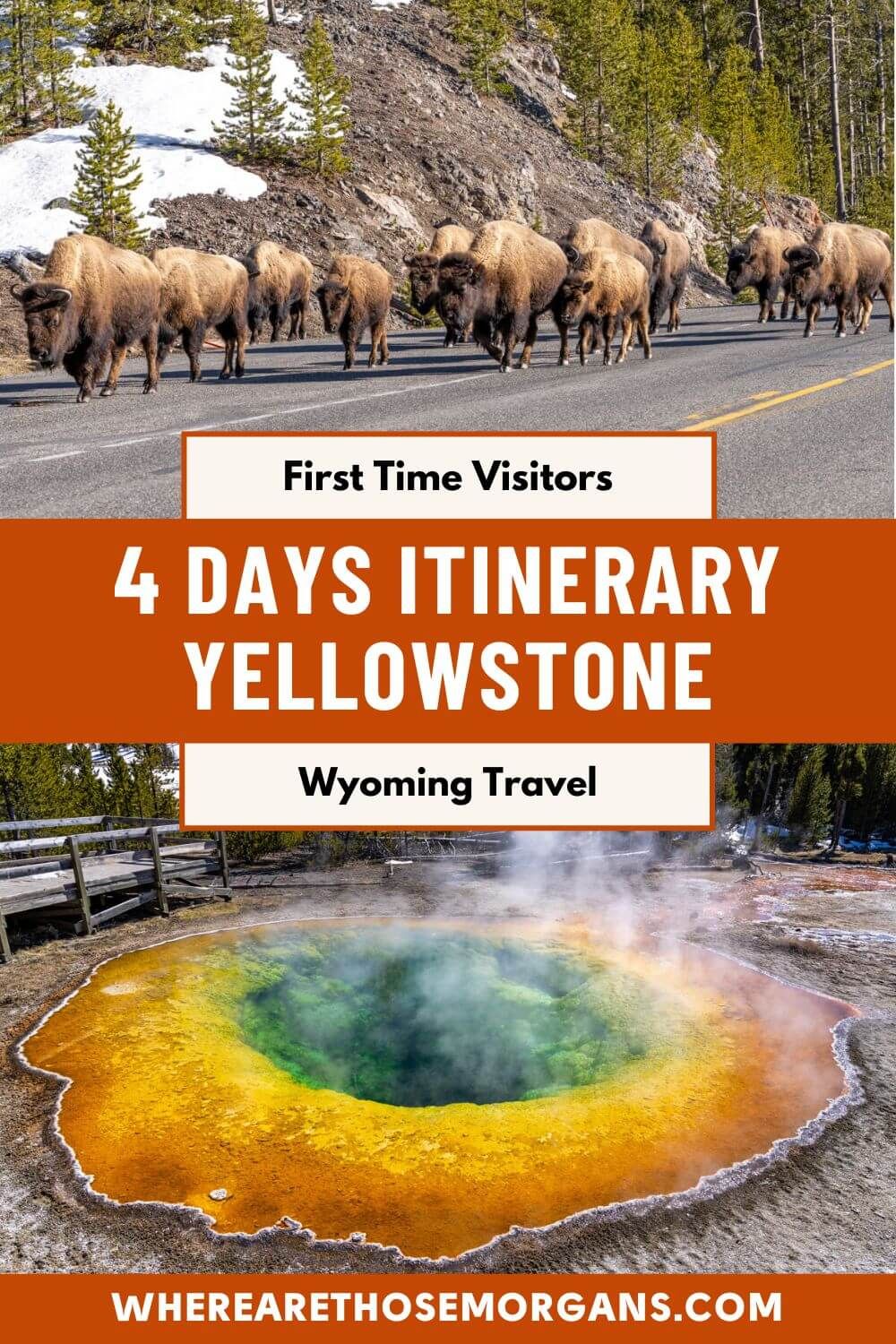
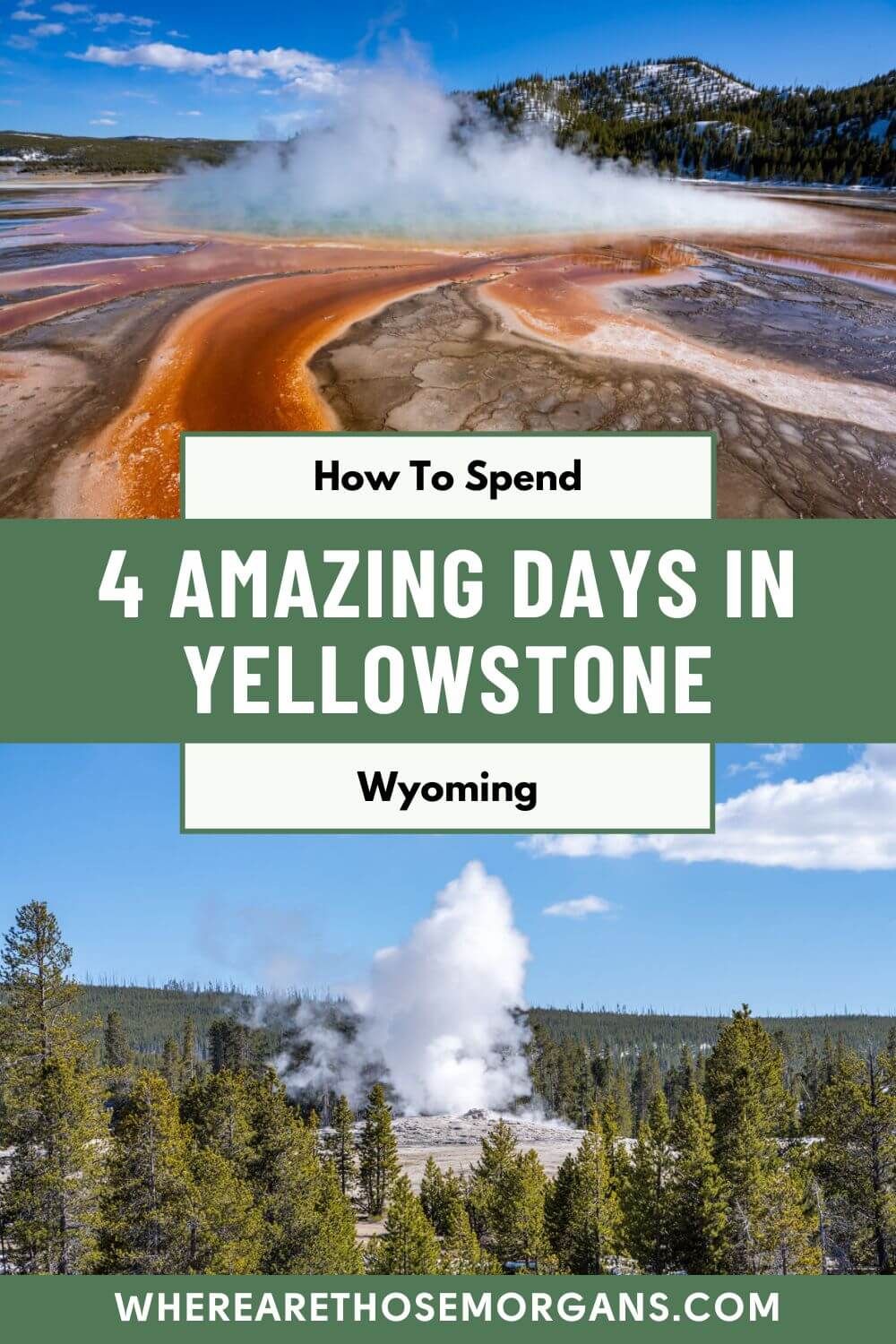
Note: This article contains affiliate links. When you make a purchase using one of these affiliate links, we may earn a small commission at no extra cost to you.
All Rights Reserved © Where Are Those Morgans, LLC. Republishing this article and/or any of its contents (text, photography, maps, graphics, etc.) in whole or in part is strictly prohibited.
Mark and Kristen Morgan are travel, hiking and photography experts. Over the last 6 years traveling full time, they have explored more than 40 countries and 30 US states.
Where Are Those Morgans has been featured in USA Today, Gestalten, Get Your Guide, CityPASS and Condé Nast Traveler along with various other publications. Read more about us.

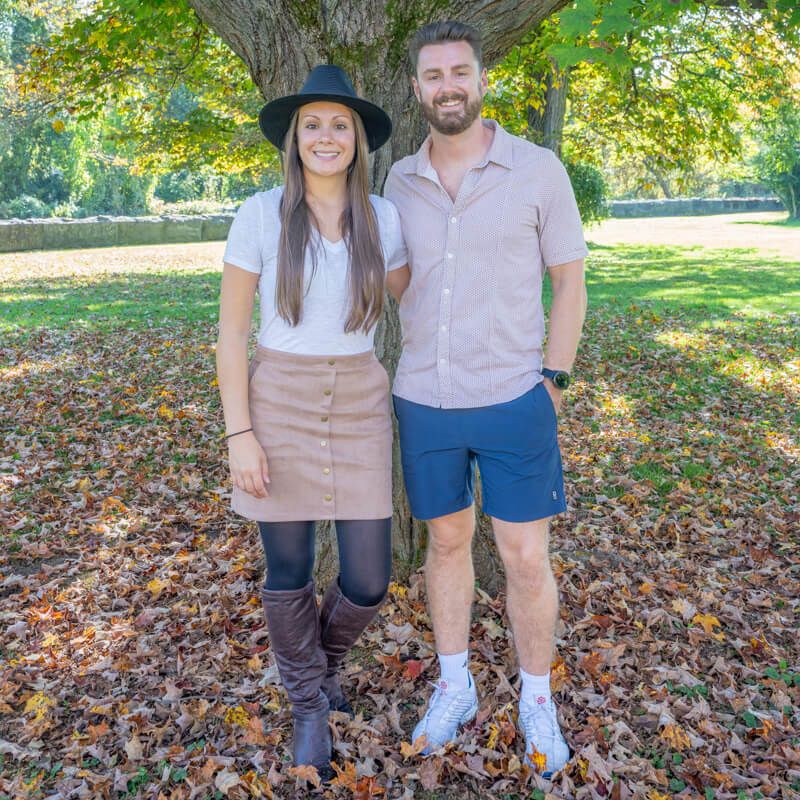
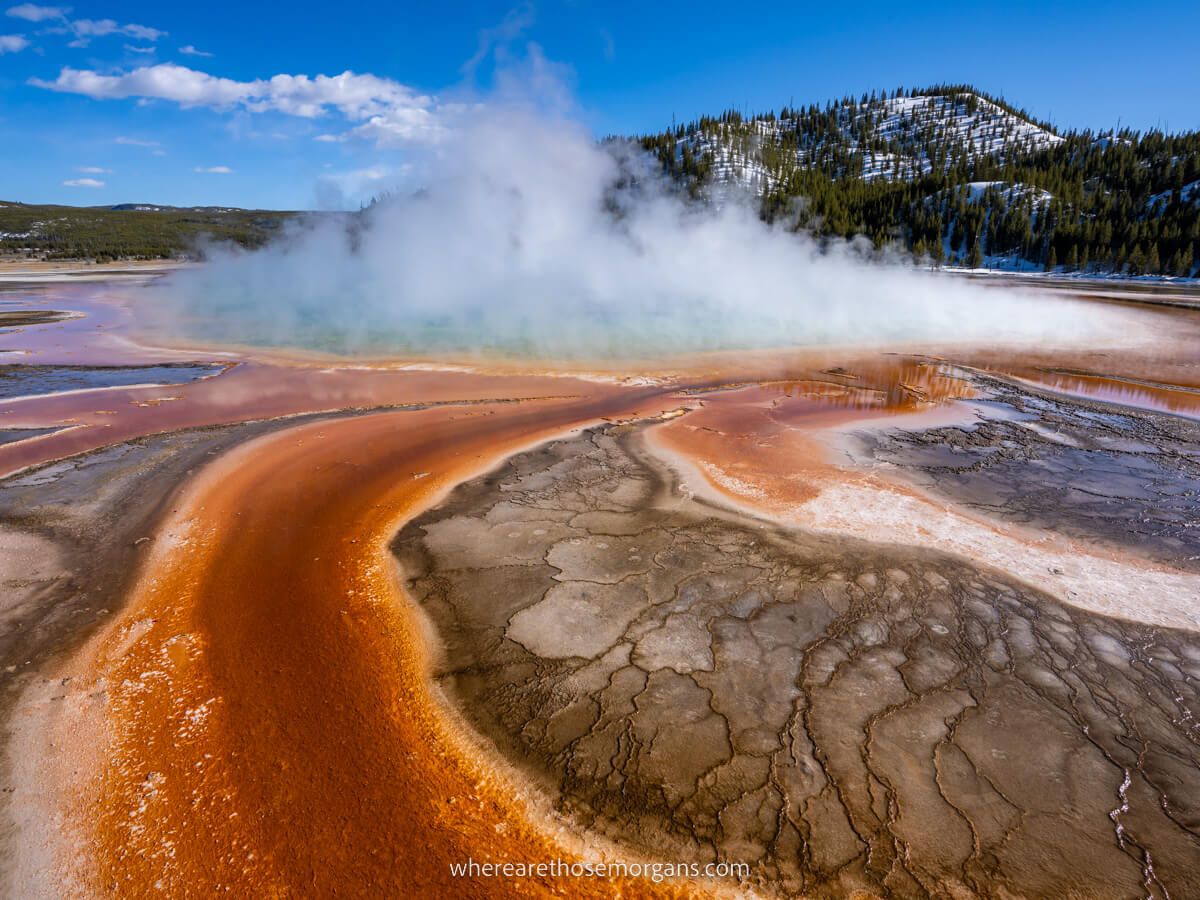
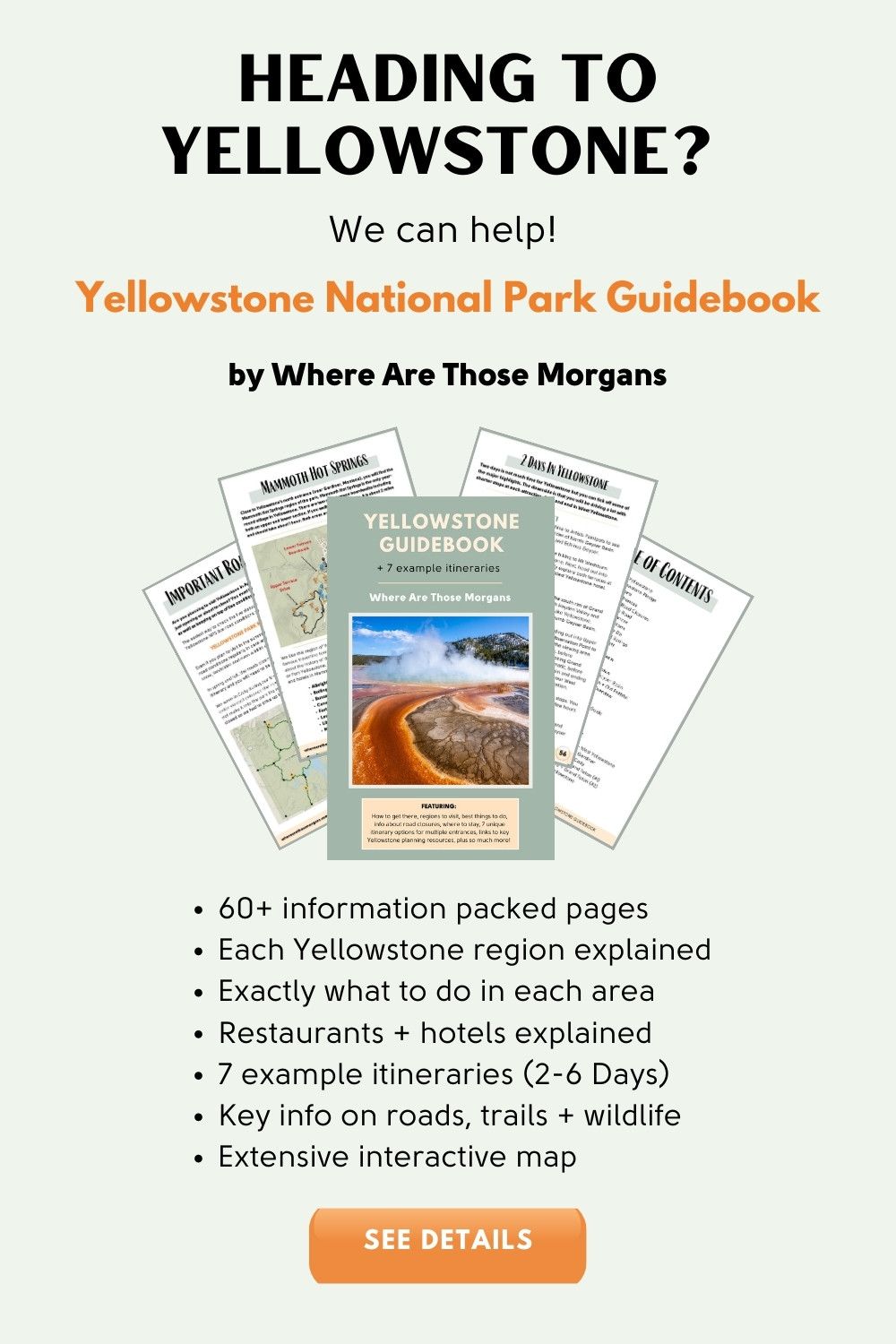
Hello, I am driving from spokane to Teton on June 7th. I want to do teton, YN and glacir and drive back to spokane. So I think it would be best for me to stay in jackson or teton for one night and then drive up to west entrance for 2 nights and stay in Gardiner for one night because my plan is to do teton in one day 3 or 4 days for Yellowstone and then drive on to Glacer national park. I know it makes perhaps more sense to to go Glacier first and then drive down to YN and to teton but I have to take a return flight from spokene and Galcer sun road is not open untill June 15th or so, so I decided to drive down to Teton via Misoula and then drive up so I reach Galcier park around 13th or 14th and have more chances to see the sun road. I know it is driving double a little but looks like best optin to me. I am also doing this loop so I can take the car from spokane and return it at spokane. Taking a car from spokane and returning at teton is very expensive.
Am I on right track?
Hi Anjana, yes it sounds like you’re exactly on track with your plans. That’s exactly what we would do in your circumstances. Have a great trip!
How long does it take to get a guidebook to Yellowstone? Is it downloadable?
Hi Melissa, yes our Yellowstone guidebook is a digital download so you can get it instantly to your phone and computer. Thank you and have a fantastic trip!
Looking to also go in through Cooke City. Any recommendations on where to stay in Cooke City that night before entering the park? Thanks!
Hi Bret, glad to hear you will be visiting Yellowstone soon. Take a look through our where to stay in Yellowstone guide to see our hotel recommendations for Cooke City. It is a great place to start because you get instant access to Lamar Valley for wildlife at dawn. Have a great trip!
is there an actual print out of just the 4 day yellowstone itinerary? point to point to see?
Hi Tricia, At the moment we do not have a printable version of this itinerary, but we hope to have one soon. You are more than welcome to print out the travel guide and if you have any specific questions about Yellowstone, feel free to ask any time. Have a great trip!
Yikes! We are planning a trip this summer starting in South Dakota and heading into Yellowstone for 4 day. Unfortunately we have to go in the summer since I work at a high school. Yellowstone is so overwhelming and it looks like we will be entering Yellowstone the week of July 4th. Planning is so overwhelming 🤪 We will be pulling our RV as well. There are no campsites available in Yellowstone so hoping to find something not too far away. Since we will be driving in each day which entrance makes themost sense or should we split time between a couple of. Entrances?
Hi Holly, we are glad to hear you have a trip planned to Yellowstone but “yikes” is definitely a great word to describe your situation! If it were us, we would try staying at a campground in or around Gardiner the first and maybe second night, then staying at a campground in West Yellowstone for the next 2 nights. We have driven from South Dakota to Yellowstone twice, entering once into northeast entrance and once into north entrance at Gardiner. Your drive over on I-90 won’t be very exciting but for you it will be about efficiency and getting to Gardiner as quickly as possible is your best bet. Then you can see the “top half” of Yellowstone in the next 2 days, before pulling your RV to a campground in West Yellowstone so you have easier access to the “bottom half” of Yellowstone. Hope that helps and best of luck getting booked up. Have a great trip!
I’m so grateful to have found this site. It’s amazing! You are so thorough and organized – I am in awe. Without this guide I would have just booked a full week in West Yellowstone and then spent most of my days driving and being stressed about being in the park after dark. Now I think I’ll book 4 nights at YGI and 3 nights in Jackson. I have dogs, so I can’t stay in the park or move around too often. We primarily want to see wildlife – I hope we see a wolf!!!
Thank you Noelle, we’re glad our guide has helped you plan your trip to Yellowstone! Last time we visited we saw a wolf near Grand Prismatic Spring, just look for a group of people with expensive cameras / binoculars / telescopes and it’s either a wolf or a bear. Have a great time!
Hi, how does one find out the driving time or distance to different areas within the parks – Yellowstone and GTNP?
Hi ALice, thanks for getting in touch with a great point – we have updated our Yellowstone itinerary with a driving distance chart to show how far it is between the major regions in Yellowstone and Grand Teton. We didn’t include times because that will change heavily depending on season but it should give you a better idea of how much driving will be involved during your visit.
Wow thanks for taking the time and sharing all that info!
With that said, it is a bit overwhelming 🙂 appreciate your help in planning my trip with my teenage daughter in early July 2022.
We’re flying in from San Francisco for 4 days.
Is there any way to contact you directly?
Thanks
Hi Meytal, yes planning a trip to Yellowstone can be overwhelming! Head over to our contact page and send us a message with any questions you have for your trip 🙂
Great article, thank you for the detailed information. We are headed for 4 days with a stay booked at the West entrance for all nights. All things considered, would you advise that I keep that spot or split it up between other entrances? All of the lodging INSIDE the park is booked up…so our only options would be to head out of the park for overnights. Looking at your itinerary for the 4 days it looks like staying where we are may just be the best option vs moving each night out to the North and then the East entrances…what do you think having been?
Hi Mel, yes getting booked inside the park is going to be a challenge this year. Stick with what you have booked in West Yellowstone for the 4 days. It’s the most central location with easier access to each of the areas inside the park. We were in Yellowstone again a few weeks ago and stayed in West Yellowstone both nights. It is a bit of a pain driving in and especially out each day as you drive directly into the sunset, but it’s by far the best option for keeping drive time down. That being said, if you are really keen to see wildlife, Lamar Valley at sunrise is your best bet and staying one night in either Gardiner (North entrance) near Mammoth or even Cooke City (Northeast entrance) would cut your driving time down significantly early in the morning. You will see wildlife without doing that but it would likely be a better experience. The drives East to Cody and South to Jackson are too long. Let us know if you have any more questions and have a great trip!
planning a trip for the summer, reading through piles of pins about Yellowstone and this is the most helpful yet! thank you so much!
Thank you Chelsea, we’re glad you were able to find the info you needed for Yellowstone. Please let us know if you have any questions about your plans but if not have a great trip!
This is such a helpful and informative review! With limited time in Yellowstone, we will be following your suggestions, but in reverse, coming up from Tetons.
Thank you Sarah, we’re glad you found it helpful – doing both Grand Teton and Yellowstone is such an amazing trip. Please do let us know if you have any questions about either park and have a great time!
Wow this has to be the best national park yet, something for everyone there, it must of been amazing.
Yes this was one of the most diverse US National Parks we visited, you’re spot on with something for everyone. We had a love / hate relationship with the snow, it was freezing cold and we might have missed out on some wildlife spotting opportunities, plus the Mt Washburn hike was closed and we couldn’t see much at Grand Prismatic Spring – but the Winter Wonderland scenery was unique and spectacular. Hope you are able to visit Yellowstone one day Graham!